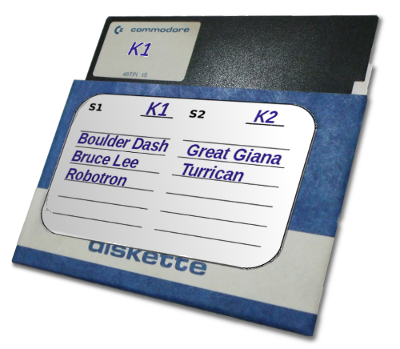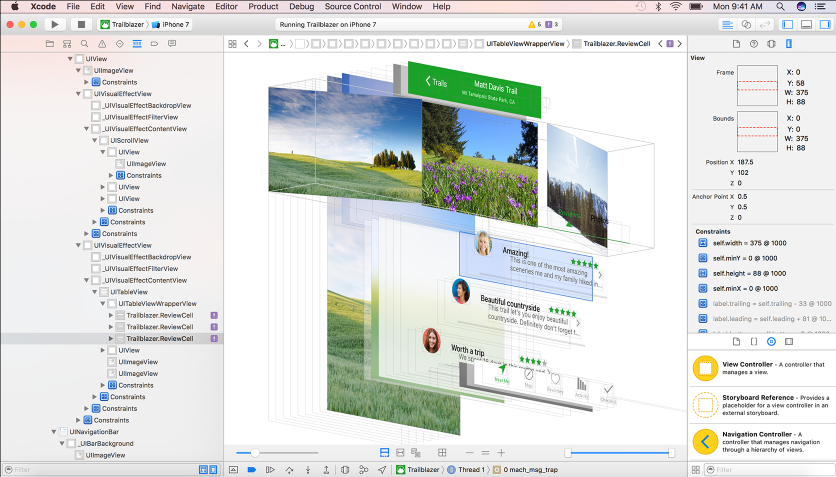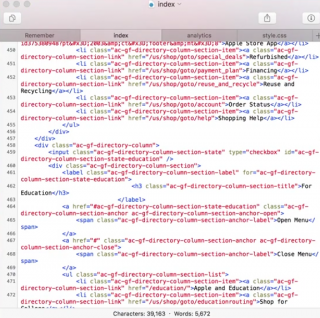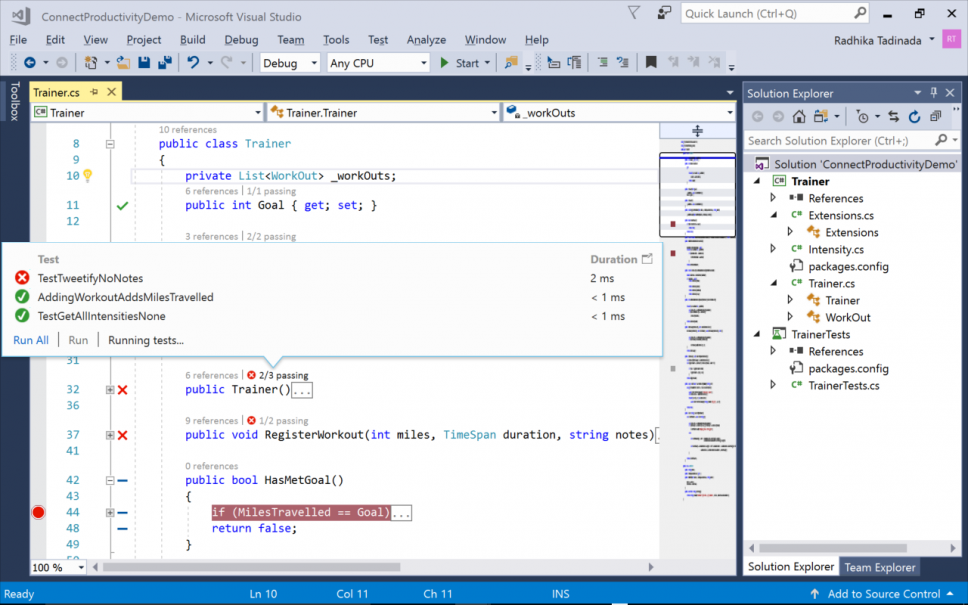38 linux list disk labels
LINUX - fdisk : how to label a partition? - Learn in 30 ... View all Disk Partitions in Linux: The following basic command list all existing disk partition on your system. The '-l' argument stand for (listing all partitions) is used with fdisk command to view all available partitions on Linux. The partitions are displayed by their device's names. For example: /dev/sda, /dev/sdb or /dev/sdc. command line - How to List Unmounted partition of a ... Listing Unmounted Partitions. To address the listing of the unmounted partitions part, there are several ways - lsblk, fdisk, parted, blkid. $ lsblk NAME MAJ:MIN RM SIZE RO TYPE MOUNTPOINT sda 8:0 0 111.8G 0 disk └─sda1 8:1 0 111.8G 0 part / sdb 8:16 0 232.9G 0 disk ├─sdb1 8:17 0 1.5G 0 part ├─sdb2 8:18 0 138.6G 0 part /media/WINDOWS ├─sdb3 8:19 0 8.1G 0 part ├─sdb4 8:20 0 ...
Find UUID of Storage Devices in Linux - Linux Hint You can find the UUID of all the disk partitions on your Linux system with the blkid command. The blkid command is available by default on most modern Linux distributions. To find the UUIDs of your disk partitions, run the following command: $ sudo blkid As you can see, the filesystems that has UUID are displayed.

Linux list disk labels
How to get drive label in Linux using C from userspace ... I need to get a label for specific device using c/c++ (and no d-bus) in linux. The problem is that i can't just open device and read it's information (for extN it is very easy to get label from device) because reading from /dev/xxx requires root privileges. how to list all hard disks in linux from ... - lost saloon bash$ lshw -class disk The above command will list all disks on the system. You can also specify the storage class if you want to print out the storage controllers as well. You can further reduce the verbosity of the output by using the -short option bash$ lshw -class disk -class storage -short blkid Labels - Linux Documentation Project Labels are not mandatory for a linux volume. Each can be a maximum of 16 characters long. There are three tools to make volume labels: mke2fs, tune2fs and e2label. 6.1.1. Simple Invocation. e2label /dev/hdb1 pubsw. tune2fs -L pubsw /dev/hdb1. Either of thse two commands will label the first partition of the second drive "pubsw".
Linux list disk labels. How to name/label a partition or volume on Linux - Linux ... Both above commands will set partition label of /dev/sda1 block device to Boot. Please note that the maximum. label length is 16 bytes that is 16 characters. Let's check the partition label. name again: # e2label /dev/sda1 Boot. To list label name for all partitions or volumes you may try to use blkid command: How to Change Linux Partition Label Names on EXT4 / EXT3 ... Below you can find listing of all such commands. 1. e2label or tune2fs The commands e2label or tune2fs used for changing label of ext2, ext3 and ext4 type partitions. # e2label /dev/sda1 ROOT OR # tune2fs -L ROOT_PART /dev/sda1 Here, ROOT and ROOT_PART are the labels to be added to /dev/sda1 which is ext4 formatted partition. 2. ntfslabel linux - List partition labels from the command line - Unix ... /dev/disk. In newer versions of the Linux kernel this info can now be found here under /dev/disk. Example $ ls -l /dev/disk total 0 drwxr-xr-x 2 root root 300 Mar 4 18:43 by-id drwxr-xr-x 2 root root 140 Mar 4 18:21 by-label drwxr-xr-x 2 root root 80 Mar 4 18:18 by-path drwxr-xr-x 2 root root 200 Mar 4 2015 by-uuid How to label disk in Linux with blkid - Linux Tutorials ... Dec 14, 2021 · Use the syntax below to add a label to any disk partition of your choosing. $ sudo e2label /dev/sda5 "MY_BACKUP" Another way to add a label is with the tune2fs command. The following syntax would be used to add a label to our /dev/sda5 partition. $ sudo tune2fs -L "MY_BACKUP" /dev/sda5
How To List Disk Partitions In Linux - OSTechNix List disk partitions in Linux using lsblk command As you see in the above output, lsblk command lists one 20GB disk named sda, with two partitions namely sda1 and sda2. If you look under the Type column in the above output, it shows the type of the device i.e. disk or part (i.e. partition). Did you notice there is one more partition name sr0? How To - Linux List Disk Partitions Command - nixCraft lsblk Command to list block device on Linux To list all block devices, run the lsblk command: $ sudo lsblk $ sudo lsblk /dev/DEVICE $ sudo lsblk /dev/sda $ sudo lsblk -l # use the grep command /egerp command to filter out info # $ sudo lsblk -d | grep disk List Disks on Ubuntu - Linux Hint Using lsblk Command: You can list all the attached disks on your computer from Ubuntu using the lsblk command as follows: $ sudo lsblk. The ones with the TYPE disk are the physically attached disks on your computer. The ones with the TYPE part are the partitions of the disks. The lsblk command without any filter shows a lot of loop devices that ... Getting disk label in Linux in C/C++ - Stack Overflow find -L /dev/disk/by-label -inum $ (stat -c %i /dev/sda1) -print That is, stat () the device file you care about and remember its inode number. Iterate over all of the files in /dev/disk/by-label, and stat () each of them. When the inode number matches, then the name of the matched file is the label of that disk.
The Linux LS Command - How to List Files in a Directory ... The ls command is used to list files or directories in Linux and other Unix-based operating systems. Just like you navigate in your File explorer or Finder with a GUI, the ls command allows you to list all files or directories in the current directory by default, and further interact with them via the command line. Linux Change Disk Label Name on EXT2 / EXT3 / EXT4 File ... Mount file system by label at Linux server boot time. The /dev/sda1 partition can be mounted by label at server boot time at /wwwdata location. Edit the /etc/fstab file, enter: $ sudo vi /etc/fstab. Set or update it as follows: LABEL=Webserver /wwwdata ext4 defaults 1 2. Save and close the file. You can also use the mount command as follows: disk - List all partition labels - Ask Ubuntu Is there a command to list all partition labels? I can list the partitions with sudo fdisk -l but it doesn't show the labels of unmounted partitions. ... $ ls /dev/disk/by-label/ Download MuruHome Ubuntu Windows8 arch ... Need some serious help to protect my file through FSCK in Linux. 0. Grub not finding Windows partition. Related. 3. Three applications for making disc labels - Linux.com But there are some fine open source applications available for creating labels for CD-ROM and DVD disks and printing jewel case inserts, including gLabels, kover, and cdlabelgen. Fedora 9, Ubuntu Intrepid, and openSUSE 11 all provide packages for gLabels 2.2.3 and kover 3, but cdlabelgen 4.1.0 is left out in the cold by all three distributions.
How to list disks, partitions and filesystems in Linux? You'll like this : you can do sudo lsblk --scsi and this shows the disk types including name (sda,sdb,..), scsi addr, type,vendor, model, rev, .. it's easy to find which is which when you want to physically locate the disk. Show activity on this post. Another way to quickly see the filesystems is the command df.
List Device Names, Disk and Partition Information in Linux ... Also, add the LABEL output column, which can help if partitions have been labeled when created/formatted. lsblk -o +FSTYPE,LABEL Show Removable Devices/USB Memory Sticks lsblk -o +RM will display an extra column that tells you if the device is removable. A "1" value means "true," which indicates a USB stick or other types of removable media.
show all unmounted disk labels? - linuxquestions.org will show all mounted and unmounted disk labels, along with UUID, filesystem, and device. Some of the other suggestions are of no use to me unfortunately. Some distros of Linux don't have the /dev/disk/by-label/ directory (mine doesn't) so that can't be used. fdisk -l doesn't show labels (at least it doesn't on mine).
Linux blkid Command to Find Block Devices Details In this tutorial we learn about blkid command in Linux and how to use it to find UUIDs. blkid usage Simply running blkid without any argument will list all the available devices with their Universally Unique Identifier (UUID), the TYPE of the file-system and the LABEL if it's set.
4 Ways to Show all Drives (Mounted and Unmounted) on Linux The "lsblk" command can be used to display the system drives in Linux in the manner shown below: $ lsblk. The output produced by this command is shown in the following image: Method # 4: Using the "parted" Command: The "parted" command can be used to display the disk partitions in Linux in the manner shown below: $ sudo parted -l
How to List Disks in Linux Command Line - LinOxide Jun 24, 2021 · In this tutorial, we learn how to list disks in Linux using the command line. 1. lsblk lsblk (list block devices) is used to list information of all available block devices, such as hard disk, and flash drives. Just typing the command lsblk will list all block devices in form of a tree format. This is the handy and simple way to list disks. $ lsblk
How to find Linux filesystem by Label or UUID using findfs ... Linux includes by default a bunch of useful filesystem tools that can be used to locate filesystems or partitions with specified tags or display the whole list of block devices along with their labels, universally unique identifiers (UUIDs) or default mount points.. Below we present common tools to locate filesystem, block device or list all block devices in Linux.
6 Different Ways to List Disks in Linux Command Line Listing Hard Drives in Linux 1. df 2. fdisk 3. lsblk 4. cfdisk 5. parted 6. sfdisk There are several ways to list all the hard drives present in a system through Linux command lines. Keep in mind a hard drive could be physically connected, virtually connected or even emulated (for example: when you use storage devices such as EMC, Sun or IBM).
How To Find Hard Disk Drive Details In Linux - OSTechNix Find Hard Disk Drive Details In Linux Using Fdisk and Sfdisk Commands. Fdisk and Sfdisk commands are used to create and manipulate partition tables. fdisk is a dialog-driven program for creating and manipulating partition tables whereas sfdisk is a script-oriented tool for partitioning any block device. Both are part of util-linux package which ...
How to get disk partition UUID in Linux - Donuts Steps to get partition UUID in Linux: Launch terminal. List partition UUID from /dev. $ ls -l /dev/disk/by-uuid/ total 0 lrwxrwxrwx 1 root root 9 Feb 27 06:29 2020-10-22-14-30-30-00 -> ../../sr0 lrwxrwxrwx 1 root root 10 Feb 27 06:23 9B8B-2022 -> ../../sda2 lrwxrwxrwx 1 root root 10 Feb 27 06:23 a7d71686-0a65-4402-b6e6-b58430ef8351 ...
How To List Disks on Linux - devconnected For some of the commands used in this tutorial, you will need administrator rights in order to have the full output of the command. In order to check that you have sudo rights, you can execute the “sudo” command with the “-l” option. If you see matching entries, it means that you are a privileged account on this machine. However, if you are notifie...
Labels - Linux Documentation Project Labels are not mandatory for a linux volume. Each can be a maximum of 16 characters long. There are three tools to make volume labels: mke2fs, tune2fs and e2label. 6.1.1. Simple Invocation. e2label /dev/hdb1 pubsw. tune2fs -L pubsw /dev/hdb1. Either of thse two commands will label the first partition of the second drive "pubsw".
how to list all hard disks in linux from ... - lost saloon bash$ lshw -class disk The above command will list all disks on the system. You can also specify the storage class if you want to print out the storage controllers as well. You can further reduce the verbosity of the output by using the -short option bash$ lshw -class disk -class storage -short blkid
How to get drive label in Linux using C from userspace ... I need to get a label for specific device using c/c++ (and no d-bus) in linux. The problem is that i can't just open device and read it's information (for extN it is very easy to get label from device) because reading from /dev/xxx requires root privileges.














Post a Comment for "38 linux list disk labels"